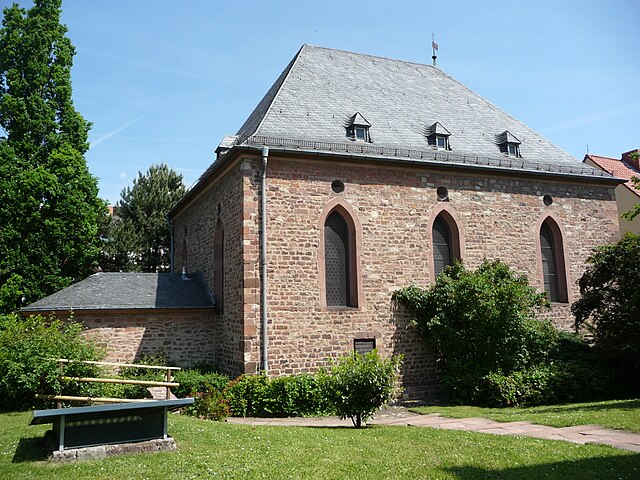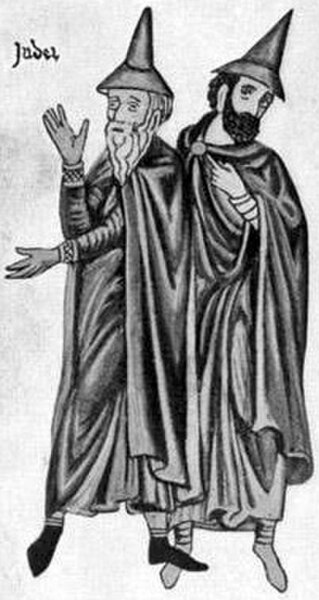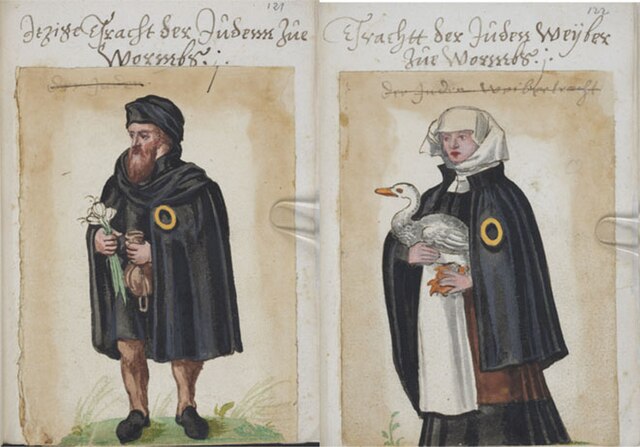History of the Jews in Germany
The history of the Jews in Germany goes back at least to the year 321 CE, and continued through the Early Middle Ages and High Middle Ages when Jewish immigrants founded the Ashkenazi Jewish community. The community survived under Charlemagne, but suffered during the Crusades. Accusations of well poisoning during the Black Death (1346–53) led to mass slaughter of German Jews, while others fled in large numbers to Poland. The Jewish communities of the cities of Mainz, Speyer and Worms became the center of Jewish life during medieval times. "This was a golden age as area bishops protected the Jews, resulting in increased trade and prosperity."
Worms Synagogue
Jews wearing the pileus cornutus depicted ca. 1185 in the Hortus deliciarum of the Abbess Herrad of Landsberg.
Mobs of French and German Crusaders led by Peter the Hermit ravaged Jewish communities in Speyer, Worms, and Mainz during the Rhineland massacres of 1096.
Holy Roman Emperor Henry VII meeting Jews in Rome, 1312
Ashkenazi Jews, also known as Ashkenazic Jews or Ashkenazim, constitute a Jewish diaspora population that emerged in the Holy Roman Empire around the end of the first millennium CE. They traditionally spoke Yiddish and largely migrated towards northern and eastern Europe during the late Middle Ages due to persecution. Hebrew was primarily used as a literary and sacred language until its 20th-century revival as a common language in Israel.
The Jews in Central Europe (1881)
The Old Synagogue in Erfurt, Germany is thought to be the oldest synagogue building intact in Europe
Jews from Worms (Germany) wearing the mandatory yellow badge.
The example of the chevra kadisha, the Jewish burial society, Prague, 1772








